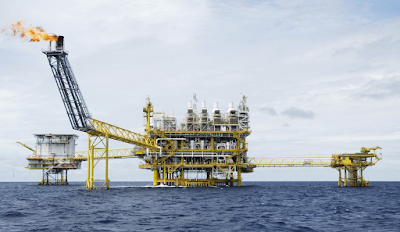A fixed platform is a permanent structure attached to the bottom of the ocean, often for the purpose of offshore oil extraction. Most of the work space of this platform is lifted over the surface of the sea from rigid steel or concrete supports. This rules a fixed platform with mobile platforms floating on the surface of the sea and anchored to the bottom of the ocean by more or less flexible moorings. Fixed platforms are typically deployed in water less than 1,700 feet (520 meters) in depth, with deeper drilling activities requiring more complex mobile platforms.
The first productive offshore oil wells were drilled in Ohio Grand Lake St. Marys State Park in 1891, using fixed platforms set on wooden piles at the bottom of the lake. In 1947, the first fixed platform drilling rig located beyond the view of the earth was built in the Gulf of Mexico. Fixed platforms were the most common method of offshore drilling for most of the 20th century, although the first mobile drilling rigs were operating since the early 1930s. Due to their high stability, depth limitation, and high, modern cost Fixed platform drilling rigs are limited to long-run drilling operations in shallow waters.
Fixed platforms are connected directly to the bottom of the ocean by a structural support known as a jacket. The first jackets consisted of concrete foundation poles, while modern deep water jackets are the tough towers of steel tubular supports. The base of a coating can be several times larger than the top, and are often driven deep into the ocean floor mud for support. The jackets are either partially or entirely built to the ground and shipped to the deck's position on bargain tugboats. Once there, they dropped to the bottom of the ocean with the help of ROV, and pushed them into position using bats mounted on barges.
The bridges that form the work space of a platform are generally built on sheltered yards or bays. While the first barges were towed on barges, many modern bridges are built to float during transit. They got to the top of the waiting jacket using hydraulic jacks or barges, and are usually quite high above the floating line to avoid all but the biggest waves. Bridges can be up to 200 feet (60 meters) in diameter, and consist of several levels of work and living space.
If a fixed platform is near the shore, you can pump oil directly from the onshore drilling site of storage facilities through gas pipelines provided along the ocean floor. In the case of drilling operations far from the ground, the platform must include large reservoirs containing the oil as long as it can be transferred to a tanker. Storage tanks are often located below the floating line, where they serve as a ballast to help the platform withstand the power of waves and currents.

No comments:
Post a Comment